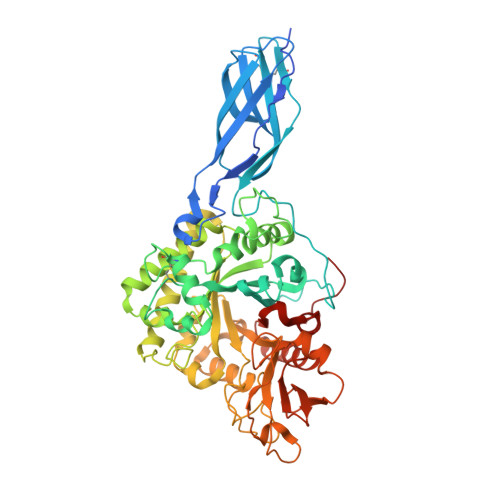Mutation of a conserved tryptophan in the chitin-binding cleft of Serratia marcescens chitinase A enhances transglycosylation.
Aronson, N.N., Halloran, B.A., Alexeyev, M.F., Zhou, X.E., Wang, Y., Meehan, E.J., Chen, L.(2006) Biosci Biotechnol Biochem 70: 243-251
- PubMed: 16428843
- DOI: https://doi.org/10.1271/bbb.70.243
- Primary Citation of Related Structures:
1RD6 - PubMed Abstract:
Family 18 chitinases have the signature peptide DGXDXDXE forming the fourth beta-strand in the (beta/alpha)8-barrel of their catalytic domain. The carboxyl-end glutamic acid, E315 in Serratia marcescens chitinase A, serves as the acid/base during chitin hydrolysis, and the side-chain of the preceding aspartic acid, D313, helps to position correctly the N-acetyl moiety of the glycosyl sugar undergoing hydrolysis. Chitin substrates are bound within a long cleft across the top of the barrel, whose floor consists of aromatic residues that hydrophobically stack with every other GlcNAc. Alanine substitution of the conserved Trp167 at the -3 subsite in Serratia marcescens chitinase A enhanced transglycosylation. Higher oligosaccharides were formed from both chitin tetra- and pentasaccharide, and the only hydrolytic product from chitin trisaccharide was the disaccharide. Greater retention of the glycosyl fragment at the active site of the -3 mutant of Serratia marcescens chitinase A might favor transglycosylation due to a stabilized conformation of its D313.
Organizational Affiliation:
Department of Biochemistry and Molecular Biology, University of South Alabama, AL 36688, USA. naronson@jaguar1.usouthal.edu














